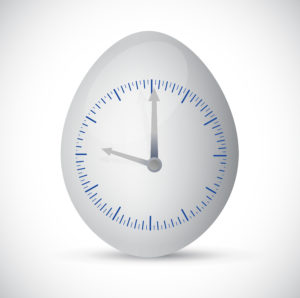Conceiving After 35
With the average age of first-time mothers on the rise, many women are waiting until their mid- to late 30s to begin trying to get pregnant. While conceiving after 35 is still very possible, there some issues to take into account. Less frequent ovulation is the most common age-related issue with conception. With time, the number and quality of eggs decreases. Other health issues in women over 35—such as prior surgery or infection that may have caused scar tissue, endometriosis, fibroids, and chronic issues such as high blood pressure and diabetes—also makes conception more difficult. Miscarriages are more common in women over 35 as well.
While this may seem overwhelming, there are many things you can do to make the process go smoothly:
- Set realistic goals: It takes an average of one to two years for women to conceive after 35, so be prepared and manage expectations accordingly. Do not put too much energy and focus into each cycle. While it’s harder said than done, try keeping it as a back-burner goal.
- Be healthy: Diet and exercise can play a huge role on your overall life—including well-being, stress levels, chronic conditions, and more—all of which contribute to your body’s ability to conceive. There’s no time like the present to eat better and get exercise! Aim for 30 minutes of moderate activity five times per week. This includes walking, biking, flow yoga, swimming, and more. Also work hard to make healthy food choices, with a focus on five servings of fruit and vegetables each day, along with lean meats and whole grains.
- Make a pre-conception doctor appointment: When you are getting close to being ready, it’s the right time to talk with your doctor. At this visit, go over your medical history, current medications, and lifestyle. It’s never too soon to get in better shape—mentally and physically.
- Seek at-home screening: Both women and men can take an at-home fertility test to initially gauge fertileness. While less thorough and conclusive than tests at your doctor’s office, at-home screening often provides peace of mind at a lower cost.
- Pick up an ovulation kit: Women typically ovulate 14 days before they get their period. However, some women experience irregular cycles, making ovulation kits useful. Women release a hormone called luteinizing roughly 24 to 48 hours before ovulation. Ovulation kits test for that hormone to narrow in on a more likely conception window.
- Track your cycle digitally: While, of course, anyone can take out a pen and a calendar to keep written track of their period, but, like most analog activities, there’s an app for that. Fertility apps track your cycle to let you know your most fertile days based on past periods. Additionally, many activity monitoring apps, such as Fitbit, include a fertility tracking option.
When to see your doctor:
- The six-month mark: Typically, it’s best to try for six months before enlisting the help of a specialist or seeking advanced fertility testing.

